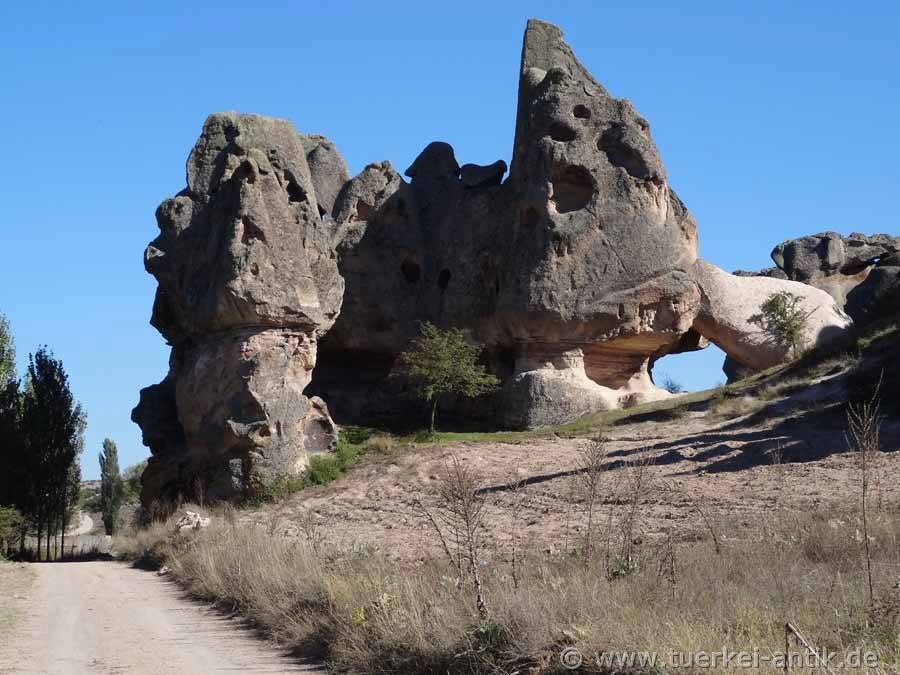 |
| Akroinos (Afyonkarahisar) in Phrygia | |||
 |
|
||
| Afyonkarahisar Kalesi | |||
|
Little is known about the ancient history of the city. The castle of Afyonkarahisar (Turkish: Afyonkarahisar Kalesi) is a fortification built around 1350 BC by the Hittites on a 226 m high rock massif. |
|||
|
|
|||
|
The fortress is probably identical to the Hittite Hapanuwa, which belonged to the Arzawa countries and was occupied by Murili II in the 14th century BC. A settlement in Phrygian times is also documented. |
|||
|
|
|||
|
The name of the town built around the castle hill was Karahisar-ı Sahib, the "Black Castle of Sahib" under Seljuk rule. This goes back to the Seljuk Wesir Sahip Ata, who had the castle repaired. The name component Afyon originates from the time after the foundation of the republic and is the Turkish word for opium. During the National Liberation War, the Turkish army under Mustafa Kemal Paşa struck a decisive blow against Greek troops in the Battle of Kocatepe hill near Afyon from 26 August to 30 August 1922. This made the fast advance to the coast and the final victory possible. |
|||
|
|
|||
| One of the typical houses in the old town | |||
|
In Roman and Byzantine times the city was called Akroinos or Akroinon. Under the name Akroinos the city and fortress belonged to Pergamon, later to the Roman Empire and from 395 AD to Byzantium.
|
|||
|
|
|||
 |
|||
| Typical rock formations in the Phrygian Valley | |||
|
|
|||
|
The Phrygian Valley near Afyonkarahisar stretches from Döğer (near İhsaniye) via Alanyurt to Seydiler. Throughout the route you can see tuff fireplaces, similar to those in Cappadocia. One sees in the rock hewn settlements, which were still habitable up to the Byzantine time. Apartments, monasteries, churches and small castles from the early Christian era as well as rock tombs and streets from the Phrygian and Hittite periods. |
|||
| Photos: @chim, Monika P. | |||
| Translation aid: www.DeepL.com/Translator | |||
| Source: Wikipedia and others | |||
|
|
|||

